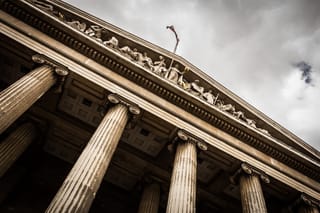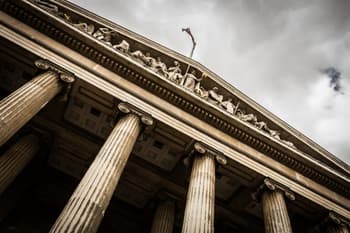Providing evidence to prove the arguments set out in your pleading is a crucial element of any proceeding. It is imperative that your evidence sufficiently supports your case, as this is the only information that the court considers when determining whether your claim is going to be successful. Evidence is required to be finalised after both parties are satisfied with their pleadings.
What is Evidence?
Evidence is used to persuade a judge or magistrate on the facts of your case, and how those facts support your legal position. Before the trial, you will have given your evidence in written form through the preparation of an affidavit. Through the trial, you may then need to provide that evidence orally as well, by getting into the witness box.
The written evidence either party provides prior to the trial can be from a few different sources, including:
- the plaintiff or defendant themselves (known as ‘lay evidence’);
- a witness (also known as ‘lay evidence’); or
- an expert (known as expert evidence).
What is the Difference Between a Lay and an Expert Witness?
The difference between a lay witness and an expert witness is their level of personal knowledge about specific topics which relate to the case. Different rules of evidence will also apply to each of them.
Experts are exactly that – experts in their specific field of study or practice. Experts are therefore able to use their specialised knowledge or professional skills to draw conclusions on the relevant facts of a case. They are allowed to draw conclusions, even where they have not personally witnessed or been involved in the events.
On the other hand, lay witnesses can only give evidence of information, facts and events relating to the case they have personally observed or were involved in.
Continue reading this article below the formWhat Is Included in an Affidavit and How Do You Use It?
An affidavit is a written account of someone’s evidence. It is a statement of the facts they observed which are relevant to proving a party’s case. An affidavit must comply with very strict technical rules of evidence.
An affidavit must be affirmed by the person who gave it and witnessed at the same time by a solicitor or a Justice of the Peace. If it is not signed or witnessed correctly, the evidence may not be accepted by the court. If the court does accept it despite the irregularities, your lawyers will later need to apply for the court’s permission to be able to rely upon that evidence in the hearing. The court may not grant that permission.
Example
Here is an example of information that could be in an affidavit:
Once the affidavit has been signed and witnessed correctly, it must be filed with the court and served on the other party. This way, they are aware of the evidence that you will be relying on during the trial. It is important that you do this on time to adhere to the timetable you agreed to during the directions hearing. If you do not adhere to the timetable, there are certain circumstances where you may not be able to rely on that late evidence at the hearing without further permission from the court.
What Are Annexures or Exhibits?
You should refer to any documents that relate to your written evidence in your affidavit. You should then attach these documents to it. These documents are referred to as annexures or exhibits, depending on their size. They are often crucial in assisting you in proving your case.
The types of documents which you may include as annexures or exhibits include:
- written contracts or agreements;
- purchase orders;
- invoices;
- delivery dockets;
- emails or letters;
- text messages;
- messages from chat applications such as Whatsapp, Slack and Viber;
- photographs;
- maps;
- diary pages; or
- spreadsheets.
What is Expert Evidence?
Your LegalVision team may also suggest that expert evidence is necessary to bolster your arguments. This will usually only be reserved for cases that are factually technical and require someone with specific knowledge of the subject matter to provide their opinion.
Expert evidence ensures that the magistrate or judge understands the technical issues that the court is looking to resolve.
To be allowed to use expert evidence, you must ask permission from the court first, usually in a directions hearing. The court will encourage the parties to save costs by using the same expert where appropriate. That single expert will prepare a report for both parties. If the parties cannot agree on a single expert, the court may allow separate expert witnesses. If the separate experts are used, they will still need to prepare a joint report, setting out the:
- issues in dispute;
- matters in agreement between them; and
- matters on which there is no agreement and the reason why there is no agreement.
What Will My LegalVision Team Be Doing?
Your LegalVision team will be ensuring that your evidence is strong and supports your arguments as effectively as possible. Some of the tasks that your LegalVision team may be undertaking to prepare your evidence include:
- interviewing witnesses;
- preparing the first draft of the affidavit;
- after doing so, serving that evidence on the other parties to the proceedings.
In addition, if:
- you are using a barrister, your LegalVision team will liaise with the barrister to finalise the evidence;
- expert evidence is required, your LegalVision team will locate and brief a suitable expert as to the issues in the proceedings.
What Do I Need To Do?
If you are at this stage of the proceedings, there are a number of different steps your LegalVision team will need to take. As such, this stage will require your:
- attention;
- time; and
- cooperation,
Some common examples of steps you will need to take include:
- letting us know who you think could be a relevant witness;
- providing contact details for witnesses so your LegalVision team can contact them;
- providing clarification on any information or documents;
- advising us on any changes to the situation;
- reviewing draft versions of the evidence;
- locating relevant supporting documents; and
- reviewing evidence from the other side.
We appreciate your feedback – your submission has been successfully received.









